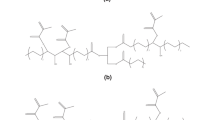Abstract
Natural fibres offer an interesting alternative to petrochemical products. Reclaimed cotton is mainly used as a low cost fibre to “fill” composites used as interior parts in the automotive industry. Mechanical requirements of such composites are low and the potential of the cotton-fibre to reinforce plastics is not used adequately. This paper gives background information and discusses the use of the cotton fibres in composites compared to ramie fibres. In this study the fibre strength was tested with a Dia-Stron device, fineness was tested with Fibreshape. A roller card is well suited to process fibres to a multi layer web. Cotton and ramie fibres were embedded in epoxy resin and a bio-based resin PTP®. The composites were tested for impact and tensile properties. The results show that mechanical properties of the composites are strongly influenced by fibre properties. The data and results demonstrate the important role force-elongation characteristics of fibre play in optimising the properties of natural fibre composites. Cotton with its morphological and mechanical properties can play a more crucial role to optimise products with a view to improve the impact properties.








Similar content being viewed by others
References
Müssig J, Karus M, Franck RR (2005) In: Franck RR (ed) Bast and other plant fibres. Woodhead Publishing, Cambridge, UK, pp 345–376
Hughes M (2004) In: Baillie C (ed) Green composites––polymer composites and the environment. Woodhead Publishing, Cambridge, UK, pp 233–251
Pal PK (1984) Plastic Rubber Process Appl 4:215–219
McMullen P (1984) Composites 15(3):222–230
Eisele D (1994) Textil praxis international (Jan/Feb 1994), pp 68–76 (in German)
Harig H, Müssig J (1999) In: H. Harig, Langenbach CJ (ed) Neue Materialien für innovative Produkte -Entwicklungstrends und gesellschaftliche Relevanz. Bd. 3. Springer Verlag, Berlin, Germany, pp 235–251 (in German)
Karus M, Kaup M (2002) J Indus Hemp 7:119–131
Karus M, Ortmann S, Vogt D (2005) Kunststoffe Plast Europe 7:1–3
Bollmann G, Hartmann S, Reiff K (1986) In: Osnabrück F (ed) Verbundwerkstoffe, Kontaktstudiengang und werkstofftechnisches Kolloquium, Fachhochschule Osnabrück, Germany (9, May 1986), pp 156–170 (in German)
Müller DH, Krobjilowski A, Müssig J (2001) In: National Cotton Council of America (ed) Fourth international Nonwovens symposium during the Beltwide cotton conferences, Anaheim, CA, USA 2001-01-12–2001-01-13, National Cotton Council of America, Memphis, TN
Hanselka H, Herrmann AS (1995) In: Messe Frankfurt GmbH (ed) 7th Int Techtextil Symposium, Neue Verbundtextilien und Composites, Textilarmierte Werkstoffe part 2, Messe Frankfurt GmbH, Frankfurt, Germany, pp 1–8 (in German)
Jiang L, Hinrichsen G (1999) Angew Makromol Chem 268:13–17
Jiang L, Hinrichsen G (1999) Angew Makromol Chem 268:18–21
Stanojlovic-Davidovic A, Bergeret A, Benezet JC, Ferry L, Crespy A (2005) In: Royal Institute of Technology (ed) EcoComp 2005, 3rd international conference on eco-composites, Stockholm, Sweden, 2005-06-20–2005-06-21, Universitetsservice US AB, www.us-ab.com, Stockholm, Sweden, CD-ROM Proceedings
Foulk JA, Chao WY, Akin DE, Dodd RB, Layton PA (2006) J Environ Polym Environ 14:15–25
Müssig J, Rau S, Herrmann A (2006a) J Nat Fiber 3:59–80
Eichhorn SJ, Young RJ (2003) Compos Sci Technol 63:1225–1230
FIBRE (1994) Bremer Baumwoll-Rundtest 1994/1––evaluation of the test results. In: Faserinstitut Bremen e.V., FIBRE, Baumwollbörse B (eds) Bremen, Germany, pp 1–18
Müssig J, Schmehl M, von Buttlar H-B, Schönfeld U, Arndt K (2006b) Indus Crop Product 24:132–145
Schönfeld U (1996) European Patent, EP0836 627
Schönfeld U (2000) In: C.A.R.M.E.N. (ed) Eighth symposium „Im Kreislauf der Natur––Naturstoff für die moderne Gesellschaft“ Nachwachsende Rohstoffe auf dem Weg ins 21. Jahrhundert (3–4, July 2000), C.A.R.M.E.N., Würzburg, Germany, pp 1–11 (in German)
DIN EN 61 (1977) Ref. No. DIN EN 61 Nov 1977. German/European Standard (in German)
DIN EN ISO 179 (1997) Ref. Nr. DIN EN ISO 179: 1997-03. German/European Standard (in German)
Sachs L (1984) Angewandte Statistik––Planung und Auswertung Methoden und Modelle, 6th edn. Springer, Berlin, pp 228–230 (in German)
Riedel U, Gassan J, Karus M, Müssig J, Prömper E, Schönberger D, Sperber V (2005) In: Arbeitsgemeinschaft Verstärkte Kunststoffe––Technische Vereinigung e.V. (AVK-TV) (ed) Internationale AVK-TV Tagung für verstärkte Kunststoffe und duroplastische Formmassen, Eighth Internationale AVK-TV Tagung, Baden-Baden, Germany, 2005-09-27 till 2005-09-28, AVK-TV, Frankfurt/Main, Germany, pp A 3–1–A 3–11
Acknowledgements
The author thanks Mr. Sebastian Rau and Mrs. Birgit Pfeiffer for their support in the fibre quality measurements and the composite production and testing. We are much indebted to Mr. Uwe Schönfeld, Leader of R&D at the company Bio-Composites And More GmbH, Ipsheim, Germany for providing us with the biobased resin PTP®-L and his support.
Author information
Authors and Affiliations
Corresponding author
Rights and permissions
About this article
Cite this article
Müssig, J. Cotton Fibre-reinforced Thermosets Versus Ramie Composites: A Comparative Study using Petrochemical- and Agro-based Resins. J Polym Environ 16, 94–102 (2008). https://doi.org/10.1007/s10924-008-0089-4
Published:
Issue Date:
DOI: https://doi.org/10.1007/s10924-008-0089-4




